THE CHILE FRONT
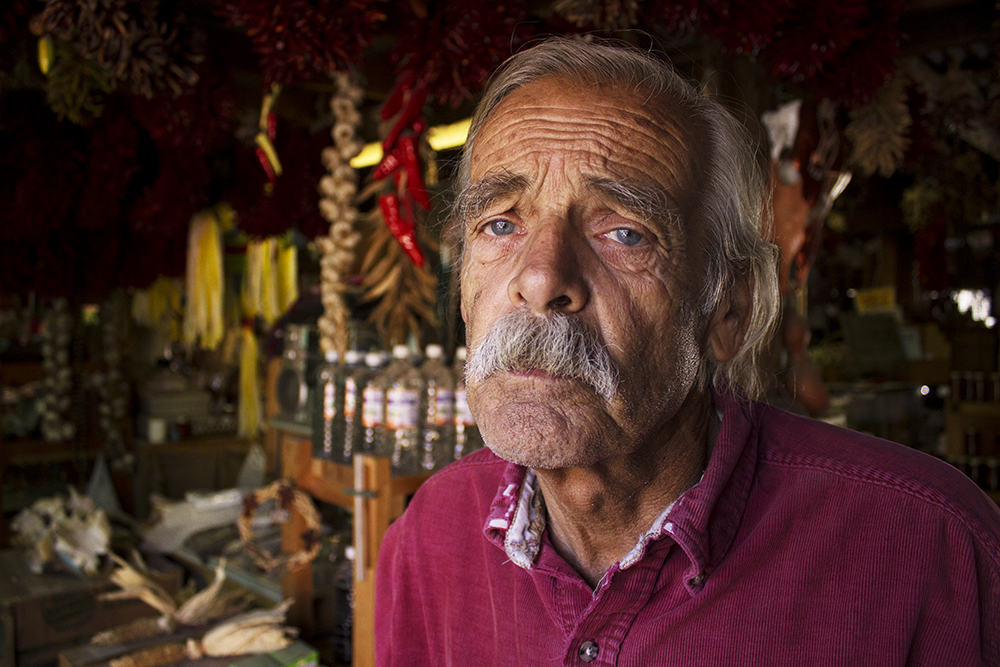
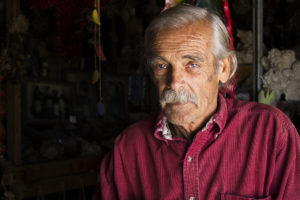


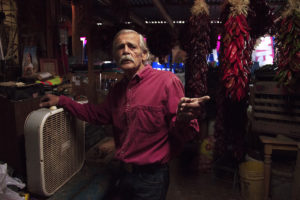
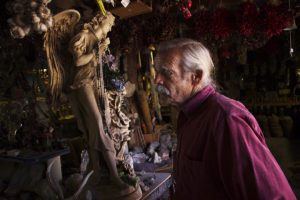
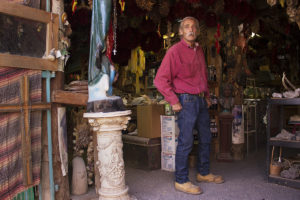
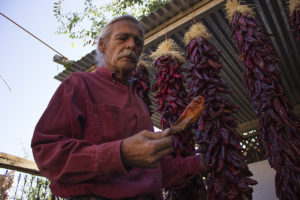
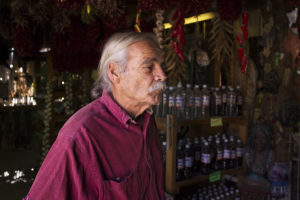
Chris Alexander is an owner of a charming mercado in the heart of the Mesilla Plaza. The modest, open-air pavilion rests atop a seven-acre piece of farmland that is currently home to fields of chilé plants. Upon entering the pavilion are shelves lined with artwork; santos, Micheal Angelo-inspired sculptures, Puebloan pottery, and jars of vanilla extract.
The roof is no exception. Lined along the endless rows of latillas is a massive assortment of ristras that Chris and his humble trio of workers have made. Some are brown and beginning to rot, while others are fresh; their chiles still green.
“They give good luck to anyone who passes by them,” Chris tells me. “That’s why they’re hung next to doors.”
In everything in this Southwest market is still, but the atmosphere is alive. Every room looks similar, yet is somehow different.
Amidst the various depictions of Nuestra Senora de Guadalupe Hidalgo, and the sinister Angel of Death, is a workspace that Chris designed himself. One where everything, as random as it looks, has it’s own place. For him, the aesthetic is more authentic and is better for business.
Chris also showcases artwork from various artists in the region, some of whom have disabilities. He pays them for their work before hand and sells the pieces in his shop. His love for the land and people is real.
When the chile season is bad, Chris can lose up to 70% of his agricultural revenue for the year, and when items such as his beautiful ristras are in demand with passers by his business suffers. This and the growing restrictions on water use from the government have only made life harder.
The work never ends, he tends the mercado seven days a week year-round. His only breaks fall between the Christmas Season and Thanksgiving.
Running the mercado is a lot of work. Between ordering new shipments of products (most of his inventory comes from Mexico), unpacking them, planting chile, harvesting it, Chris also has the added burden of issues that could only effect a business housed in an open-aired pavilion.
Cats and pigeons tend to find their way into the store at night, and their rather pesky visitors. Chris has arrived some morning to find fine artwork shattered on the walkways that appeared to be the result of a midnight chase in his store. He keeps the broken pieces scattered throughout the shop- adds to the authenticity.
Chris’ job at the mercado is one that is popular among many border communities. Not only does he have to deal with international shipments, but agricultural regulations as well. He is an entrepreneur, small business owner, supervisor, and agriculturalist. The endless labor and modest return
The endless labor and modest return is what I consider to be at the heart of his ‘dirty work’. I don’t know a lot of people who would take his place. His contributions to the region help preserve the cultural significance of the valley and looks to endure for many more years.


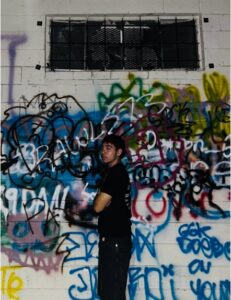



I misread the syllabus and I was awaiting further instruction to post on a website I thought was Que Miras. I now realize that was meant to mean Documentary Shooters. In the spirit of the hard news story we were supposed to do, I posted some images along with a news article of the Trump Protest last night in an effort to redeem myself for the late post. Since hard news is emphasized on the timing of everything I thought it’d be a good substitute for the points I may lose for posting late.
Your story is excellent. Your portraiture is fine. I would suggest that you go a little farther and show what the guy does…what his “Dirty Work” is. Just the portraits are very “honoring” of the man, but I think your viewer needs more to know him more. Overall…Well Done!